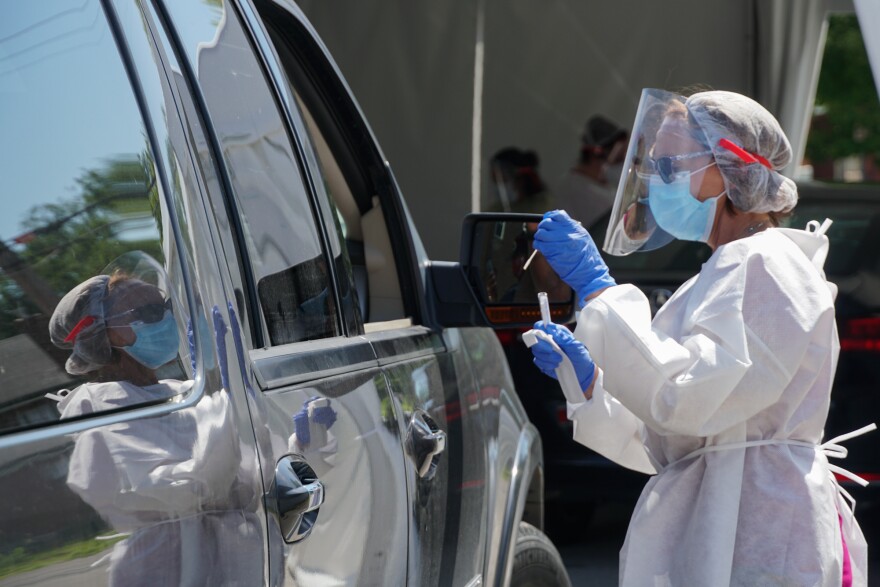Fewer patients in Missouri who get sick with the coronavirus are dying now than when the virus began spreading in the spring, according to state health department data.
As of October, fewer than 2% of people who tested positive for the virus have died, compared with more than 6% in May, according to cumulative data from the Missouri Department of Health and Senior Services.
Doctors say younger people with healthier immune systems are getting sick, and doctors are somewhat better at treating the virus than they were at the beginning of the pandemic.
The lower mortality ratio doesn’t mean COVID-19, the disease caused by the virus, is becoming less deadly, said Dr. Alexandre Lacasse, an infectious disease specialist at SSM Health St. Mary’s Hospital. It reflects how widespread the virus is among young people, he said.
“The more we go, the more we have community spread and the more our demographics are younger and younger and changing,” he said. “The COVID seems to be much milder in younger populations that don’t have significant disease.”
In early spring, the coronavirus ravaged nursing homes full of elderly people with existing health problems and weak immune systems, he said. Since then, nursing homes have become protective bubbles, with strict visitor policies in place and employees who use protective equipment.
There isn’t a cure for COVID-19, but doctors are getting better at treating the disease with steroids and the antiviral drug remdesivir. They’ve also learned when it’s best to use ventilators.
Still, health care workers warn that the percentage of people who die is only one measure of how dangerous the virus is, and they expect the average number of daily deaths to rise as cases dramatically rise statewide.
“If you take a fatality rate that is low, and you multiply it by an extremely large number of people who are infected, that's still a substantial number of patients,” Lecasse said.
Hospital leaders have warned that the increasing number of daily hospital admissions is not sustainable. On Monday, the region’s four largest health systems admitted 72 patients with the coronavirus, the highest single-day number since the pandemic began.
“Mortality shouldn’t be the only number we look at when we are looking at the devastation this virus is causing,” said Dr. Aamina Akhtar, chief medical officer at Mercy Hospital South. “The impending tax that it puts on the health care systems is going to be worse than before.”
Health officials said that even if people don’t die of the disease, many are still experiencing serious illness and long-term complications.
“This is more than about people dying, this is about people who end up in long-term care for periods of time because they’re never quite well enough to go home,” said Dr. Sarah Gebauer, an epidemiologist and family medicine physician who teaches at St. Louis University. “These are people with long-term lung function problems, people who have strokes.”
Death statistics look at the worst-case scenario, said Dr. Fred Echols, St Louis' acting health director. People who don’t have serious symptoms can still give the virus to vulnerable people.
St. Louis is one mistake away from another nursing home outbreak, he said.
“We could have a repeat of what happened early on in the pandemic,” Echols said. “We really try to bring home the importance of considering the entire community, not just yourself, when you think about whether or not you’re going to wear a face covering or socially distance yourself.“
Follow Sarah on Twitter:





